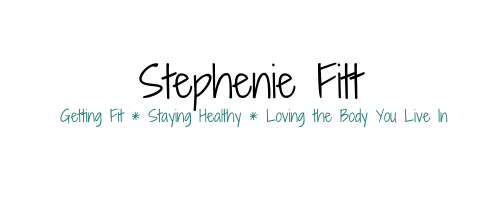Our bodies are bombarded with chemicals from items we use, eat, or are exposed to on a daily basis. Here are 3 things you can do to decrease your toxic load.
1. Toss Out Your Body Care Products and Replace Them With Safe Alternatives
Yes, this one’s tough. You spent a lot of time and money accumulating the beauty care items in your collection. Everything from your body spray to your lipstick, eyeliner, shampoo, lotion, nail polish, an even sunscreen can be toxic to your body. Feminizing chemicals called xenoestrogens, or fake estrogens, are absorbed and delivered directly into the blood stream when you apply these products to your skin (Pols, 2013). Even small doses over time accumulate in your fat cells (it’s called bioaccumulation) and result in abnormal, even toxic effects to your body (Pacia, Dołhańczuk-Śródka, & Ziembik, 2016) Chemicals such as phthalates, parabens and others feminizing agents mimic estrogen in both females and males, contributing to estrogen dominance and resulting issues such as infertility, breast cancer, prostate and testicular cancer, obesity, endometriosis, early onset puberty, miscarriages and diabetes (LaRue, 2012).
Check out The Environmental Working Group’s Skin Deep website and app for a comprehensive review of thousands of beauty care products. If your favorites are Environmental Working Group (EWG) Certified, keep them. If a product doesn’t pass or gets a low rating, toss it and use the extensive EWG database to find a safe alternative.
Make it a point over the next few months to go through all of your household products as well. Many of them, including air fresheners, laundry detergent, dryer sheets, cleaning supplies, and insect repellants are sources of xenoestrogens, too.
I detailed some of the changes I’ve personally made in a couple of blog posts I wrote a while back. Check them out HERE (where I talk about quitting hair highlights) and HERE (where I talk about tossing out my chemical-filled makeup).
2. Eat Organic Produce and Meats
Agricultural chemicals in the form of herbicides, fungicides, and insecticides are widely used to treat produce and are toxic to our bodies. Like xenoestrogens, pesticides bioaccumulate over time and so even little exposures can add up to bigger problems. Trace residues on foods that we eat (and foods that are fed to animals that we eventually eat) have been approved by the FDA and the USDA and deemed “safe.” But nobody knows the toxic effect of the bioaccumulation of these products over time, although “evidence is mounting that elevated levels of chemicals in our bodies are linked to higher risk of adult diseases such as reduced fertility (particularly in men), immune suppression, and bladder, breast and other cancers” (http://www.panna.org/resources/pesticides-our-bodies, 2017). Eating organic fruits, vegetables, meats, and poultry helps us have more control over what we are putting into our bodies and helps us decrease our overall toxic load.
Start small. Check out EWG’s Food Scoring system as you strive to balance the cost-benefit of eating organic. Some foods, like strawberries and apples are definite organic choices, but others like avocadoes and pineapple allow for more buying freedom. Avoiding breaking the bank while feeding your body the best possible foods is key. Buy a few items organic and over time, add in more. Cut out processed foods to redistribute your food budget towards healthier choices, and over time you’ll be able to make the switch to fully organic without feeling a big hit on the wallet.
Prepping your produce is important, too, to minimize our chemical exposure, even on organic goods. Here’s a VIDEO from my YouTube channel that shows how I wash and prep my produce.
Don’t forget that meats can have high levels of hormones, antibiotics, and pesticides, too. Look for meat that is humanely raised, fed organic, vegetarian feed (including pastureland), and antibiotic and growth hormone-free.
3. Avoid Storing and Consuming Food and Drinks in Plastic
Yep, you guessed it. Endocrine Disrupting Compounds (EDC’s) exist in plastics, too. Food and drinks stored or wrapped in plastic are also exposed to these feminizing xenoestrogens (Dvorsky, 2013). It’s almost impossible to avoid, but a few changes can decrease your exposure dramatically.
Look to buy products that are free of plastic wrapping. Buy foods in paper or glass containers when possible. Bring reusable cloth sacks to bag your produce for purchase rather than using the plastic baggies the grocery stores provide (this helps decrease waste, too). Reusable glass or stainless steel water bottles are preferred over plastic bottles. Even BPA-Free labeled plastics should be avoided, as other components of plastics are toxic (Dvorsky, 2013). Store your foods and leftovers in glass, stainless steel, or food-grade ceramic containers rather than the conventional plastic alternatives. Avoid using plastic drinking straws, eating utensils, and plastic wrap. Seek options made of wood, metal, paper, glass, or bamboo.
I made a point of ridding my kitchen of plastic a while back. HERE is my blog post about it.
Step by step, little by little, we can make changes to our surroundings to lessen the toxic burden of chemical-laden body care products, foods, and plastics. Every little bit makes a difference!
Yours in health,
References
Dvorsky, G. (2013, March 28). How To Recognize the Plastics That Are Hazardous To Your Health. Retrieved July 05, 2017, from http://io9.gizmodo.com/how-to-recognize-the-plastics-that-are-hazardous-to-you-461587850
Pacia, A., Dolhanczuk-Srodka, A., & Ziembik, Z. (2016). Assessment of Environmental PollutionCaused By EDCs From Everyday Objects. In Proceedings of ECOpole (Vol. 10, Ser. 2, pp.481-487). Zakopane, Poland: Towarzystwo Chemii i Inżynierii Ekologicznej. doi:10.2429/proc.2016.10(1)050
Pesticides in Our Bodies. (n.d.). Retrieved July 05, 2017, from
http://www.panna.org/resources/pesticides-our-bodies
Xenoestrogens: What Are They, How to Avoid Them. (2017, May 11). Retrieved July 05, 2017, from https://womeninbalance.org/2012/10/26/xenoestrogens-what-are-they-how-to-avoid-them/




